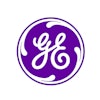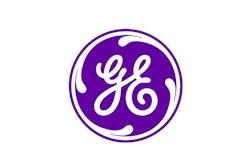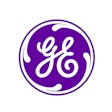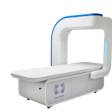For decades, the strength of your network -- whether measured in number of connected hospitals, cloud nodes, or referral relationships -- was the ultimate moat. If you had the pipes, you controlled the flow. But agentic AI is rewriting the rules: The moat is no longer the network; it’s the application layer on top.
 Rishi Nayyar.
Rishi Nayyar.
Agentic AI systems can work through the very same portals and access points your users already have. They don’t need privileged “inside” connections. They don’t need you to have signed a connectivity agreement with every node on the map. They simply log in like your staff would, navigate as your staff would, and retrieve what your staff would. The difference is that they do it tirelessly, deterministically, and at scale.
And that shift is happening under severe financial pressure. Across North America, margins remain thin while labor and administrative costs continue to strain operations. Labor costs make up more than 50% of a hospital’s expenses, and they are only rising.
Meanwhile, 57% of healthcare leaders report that time and attendance processes remain manual, resulting in data discrepancies that require additional manual work. Staff spend their days toggling between portals, reentering data, and chasing down information that lives in another healthcare system. When resources are this strained, tying efficiency to whether you’re “inside the network” makes less and less sense.
Regulators are taking notice, too. In September, HHS announced it will begin enforcing information blocking rules with new teeth, warning that organizations that slow or restrict the flow of electronic health information could face penalties. That only accelerates the erosion of “network control” as a moat.
That means rate limiting doesn’t stop it. Blocking doesn’t stop it. When the automation is working at the cadence of a human user -- reading a portal screen, making the next click, downloading a file -- it’s indistinguishable from the very people your systems were built for.
A new way forward
And here’s the rub: That means you’re no longer forced to use the system that “owns” the network.
A radiology group doesn’t need to funnel every patient through a vendor’s proprietary image exchange in order to deliver outside studies. If the patient has those images in their MyChart or vendor portal, agentic AI can collect and route them into your workflow -- no need to buy into the exchange license.
A hospital CIO no longer has to accept that Epic’s App Orchard, Cerner’s marketplace, or FHIR/HL7 interfaces are the only way to connect into their EHR ecosystem. Those traditional integration paths require vendor approval, lengthy development cycles, and often significant fees. If users can log in and perform a workflow, automation can do the same thing -- and now you can layer your own applications on top, instead of waiting for a sanctioned integration.
We’ve seen this pattern before outside of healthcare. In banking, consumers were told they could only manage their money through their bank’s website. Yet Plaid and similar tools, using user credentials, made it possible for fintech apps to deliver budgeting, lending, and payments on top of the same networks the banks thought they controlled.
In travel, airlines built closed booking systems that forced agents and travelers into their channels. Then came aggregators like Hopper and Skyscanner, using automation and scraping, giving travelers the power to shop across carriers without ever entering the airlines’ chosen ecosystem.
States are beginning to signal the same shift. In Texas, a new law (SB 1188) requires hospitals to disclose when AI is used in care and to keep EHR data stored in the U.S. Whether you agree with the law or not, it reflects a growing reality: scrutiny is moving up the stack, away from pipes and networks, toward the transparency of the applications running on top.
Automation as a user
The lesson is clear: the old model of distribution power through network exclusivity breaks down when automation can act as your user. The real differentiation moves upstream to the application layer -- the intelligence, transparency, and experience you deliver once you have the data in hand.
That’s good news for patients and providers. It means less time waiting for records, fewer silos, and more energy focused on care. And this isn’t just theory. In July, the White House announced a pledge with major tech firms to accelerate a patient-centric interoperability ecosystem. It forces vendors to compete on usability, safety, and insight rather than network bragging rights. And most importantly, it points toward a future where access to medical data isn’t throttled by proprietary networks but enabled by intelligent applications that work with the systems we already have.
The pipes are becoming invisible. The fight is moving to the layer that actually matters: making healthcare better.
Rishi Nayyar is co-founder & CEO of PocketHealth.
The comments and observations expressed are those of the author and do not necessarily reflect the opinions of AuntMinnie.com.



















